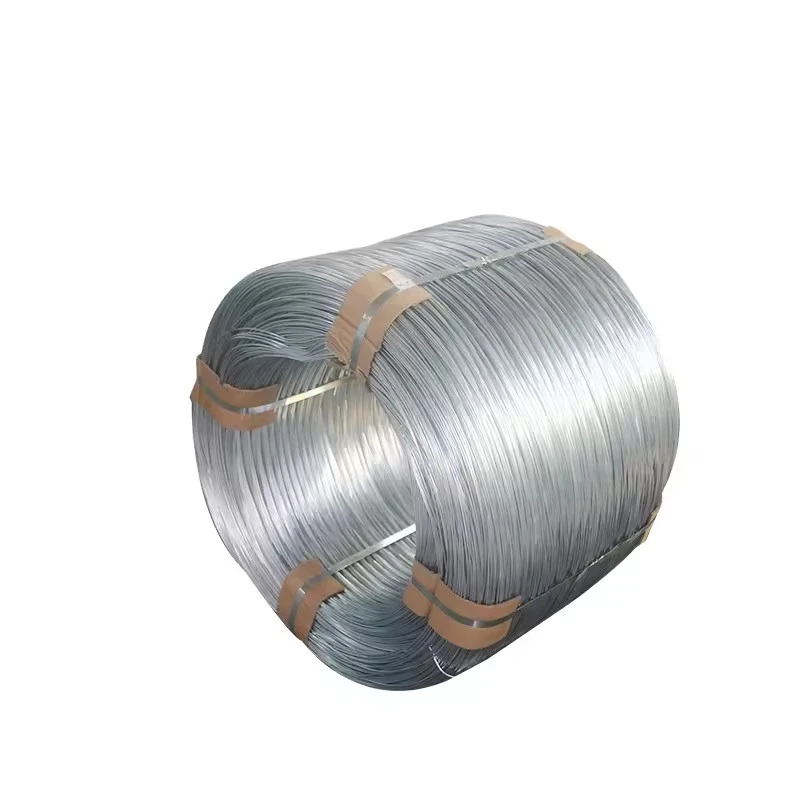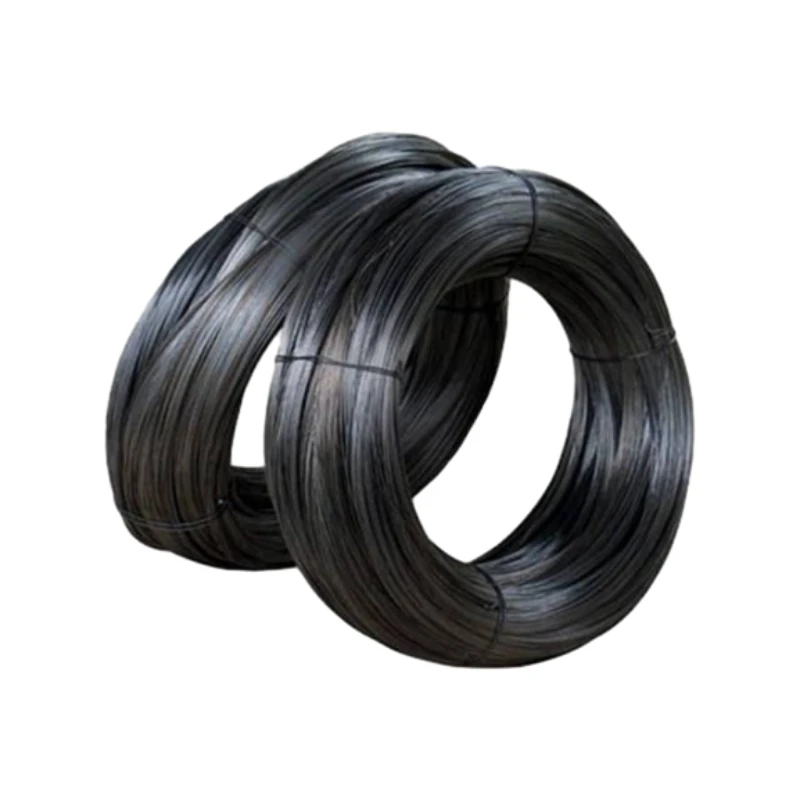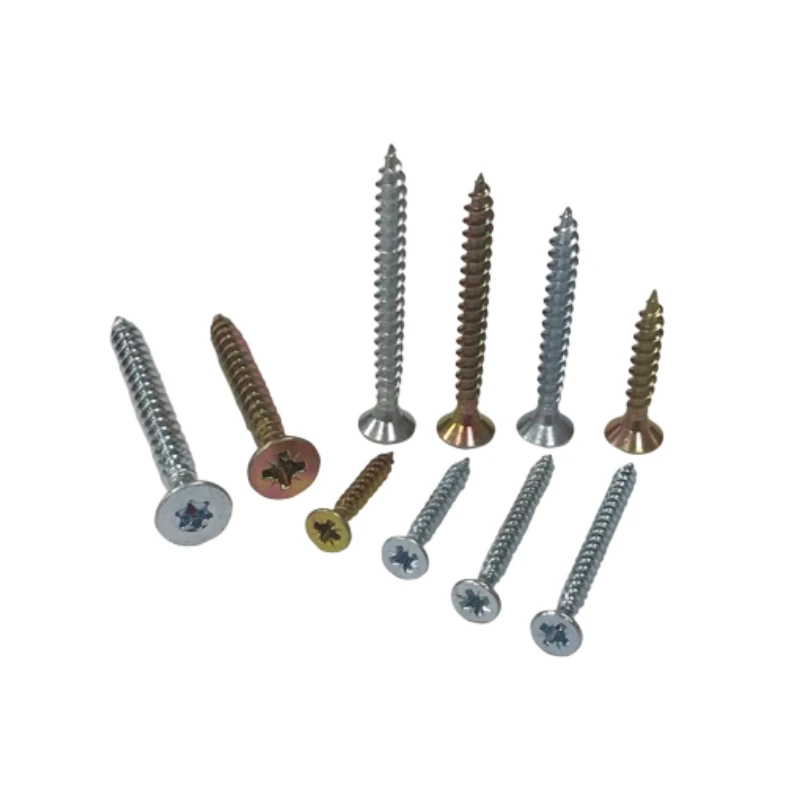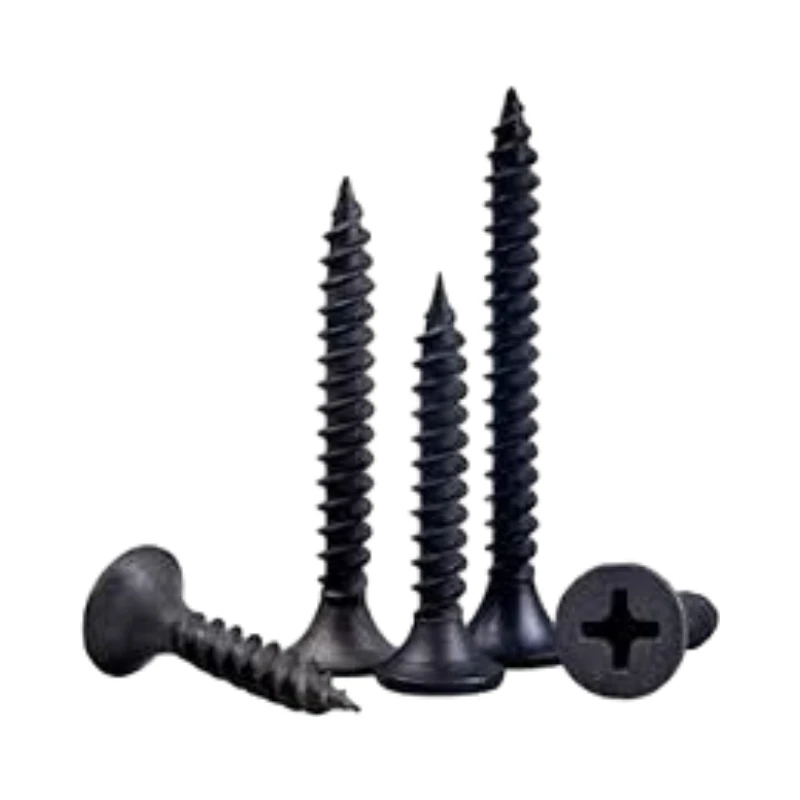
Talk With Us
+86-13601661296
Email Address
admin@sxjbradnail.comChipboard Screw Sizes | Strong Grip, Clean Finish
A Field Guide to Chipboard Screw Sizes (from someone who’s actually spent time on job sites)
If you’re shopping parts lists or writing specs, you’ll run into chipboard screw sizes within minutes. And yes, they vary more than most people expect. I’ve toured factories in Hebei and sat with cabinet makers in Warsaw comparing pull-out values over coffee. The quick takeaway: the Multipurpose Countersunk Head Chipboard Screw (PZ2 drive, double countersunk) coming out of Lixinzhuang Industrial, Dingzhou, Hebei, China is a quietly competent workhorse—fully or partially threaded, sharp point, and built for chipboard, MDF, hardwood, even plastics.
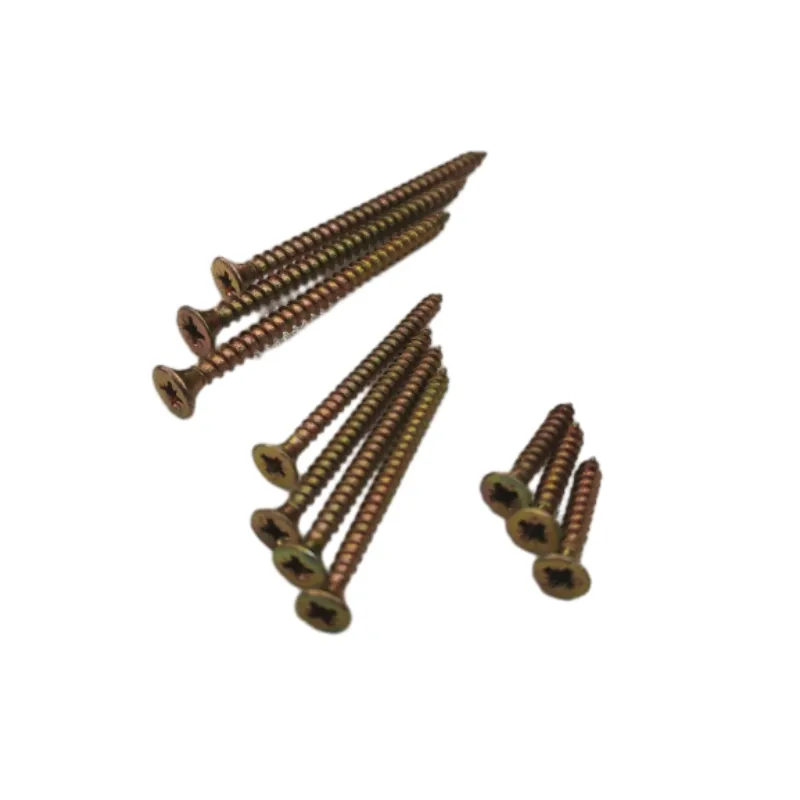
Industry trends (and the size question)
Over the last five years, I’ve seen a steady shift to finer threads and better plating. Architects are calling out chipboard screw sizes more precisely—diameter, length, threading style—because engineered woods punish the wrong choice. There’s also a move toward higher head strength to prevent shear, which is where double countersunk designs punch above their weight.
Technical specs at a glance
Drive type is PZ2. Double countersunk head for deeper recess and lower cam-out; sharp point for quick start; optional full or partial thread. In the real world, that means fewer splits and faster bite into MDF.
| Diameter (d) | ≈ 3.0–6.0 mm |
| Length (L) | ≈ 12–200 mm (common: 3.5×16, 4.0×30, 4.0×40, 4.5×50, 5.0×70 mm) |
| Thread | Fully or partially threaded; coarse chipboard pitch |
| Material | C1022 steel (case-hardened); optional stainless A2 on request |
| Coating | Zinc, yellow zinc, black; Ruspert for higher corrosion resistance |
| Drive/Head | PZ2, double countersunk (reduced head shear, cleaner flush) |
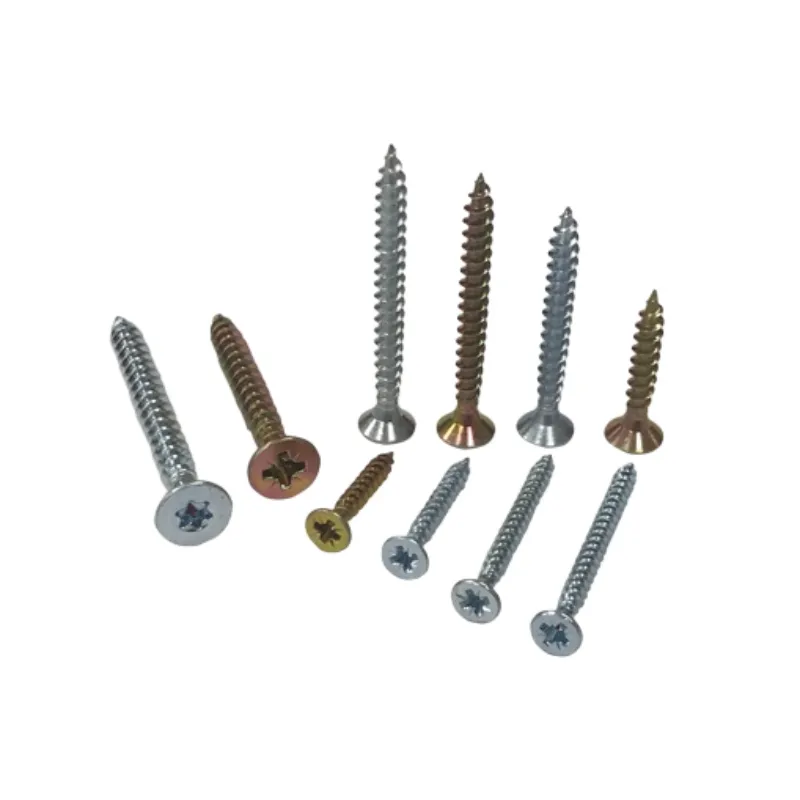
Process flow and testing
- Materials: C1022 wire rod → cold heading → PZ2 recess forming → thread rolling → heat treatment → coating.
- Methods: case hardening for surface hardness with ductile core; controlled thread pitch for MDF bite.
- Testing: per EN 14592 (axial withdrawal), ISO 4042 (coating), ISO 9227 salt spray; typical neutral salt spray 72–240 h depending on finish.
- Service life: indoors ≈ 10–15 years; outdoors use Ruspert or stainless and follow EN 1995-1-1 exposure classes.
- Certifications: ISO 9001 QA; CE marking/ETA where project specs require.
Field data: in chipboard (ρ≈650 kg/m³), a 4.0×40 mm recorded axial withdrawal ≈ 650–900 N in shop tests; real-world use may vary with pilot hole and moisture.
Where the sizes matter most
- Cabinet carcasses (MDF/particleboard): 4.0×30–40 mm, full-thread for panel-to-panel.
- Worktops and cleats: 5.0×70 mm partial-thread for strong clamping.
- Plastic fixtures: 3.5×16–20 mm to avoid cracking.
- Hardwood trims: pre-drill; go smaller diameter to limit splitting.
Many installers tell me the double countersunk head simply saves time—less head snap, cleaner finish. With chipboard screw sizes, pick length at 2.5–3× the thinnest member thickness as a rule of thumb.
Vendor comparison (my notebook version)
| Vendor | Lead Time | Certs | Customization | Price Index |
|---|---|---|---|---|
| SXJ (Dingzhou) | ≈ 15–30 days | ISO 9001; CE/ETA on request | Sizes, coating, packaging, logo | Low–Medium |
| EU Distributor | Stock/2–5 days | CE/ETA common | Limited sizes; quick swaps | High |
| No-brand Import | Unclear | Varies | Minimal | Lowest |
Customization and feedback
Options include non-standard chipboard screw sizes, Ruspert for coastal installs, and retail or bulk packaging. Customers keep mentioning smooth PZ2 engagement and “no chirp” on impact drivers—small thing, big morale boost on long installs.
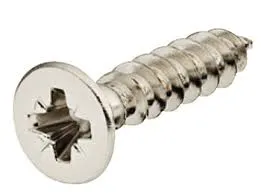
Two quick case notes
- Poland cabinet line: switched to 4.0×40 full-thread; scrap panels down ≈ 12% due to fewer splits.
- Dubai shopfitters: Ruspert 5.0×70 partial-thread held up through aggressive fit-out schedule; visible heads stayed clean.
Bottom line: choose chipboard screw sizes by substrate density, clamping need (partial thread for jointing), and exposure class. And yes, buy from someone who can show you real test sheets.
References
- EN 14592: Mechanical fasteners for timber structures – Requirements.
- DIN 7505: Screws for wood – Chipboard screws (general dimensions and properties).
- ISO 4042: Fasteners – Electroplated coatings.
- ISO 9227: Corrosion tests in artificial atmospheres – Salt spray tests.
- EN 1995-1-1 (Eurocode 5): Design of timber structures – General rules.
-
Essential Guide to Steel Brad Fasteners: Uses, Specs & TrendsNewsNov.20,2025
-
Durable and Reliable SS Brad Nails for Every ApplicationNewsNov.20,2025
-
Masonry Brad Nails: Durable Fastening Solutions for Modern ConstructionNewsNov.19,2025
-
Hot Dipped Galvanized Brad Nails – Ultimate Guide for Durable Construction FastenersNewsNov.19,2025
-
Durable and Cost-Efficient Galvanized Brads: Your Essential Fastening SolutionNewsNov.18,2025
-
Galvanized Brad Nails for Treated Lumber — Durable Fastening Solutions for Lasting BuildsNewsNov.18,2025

